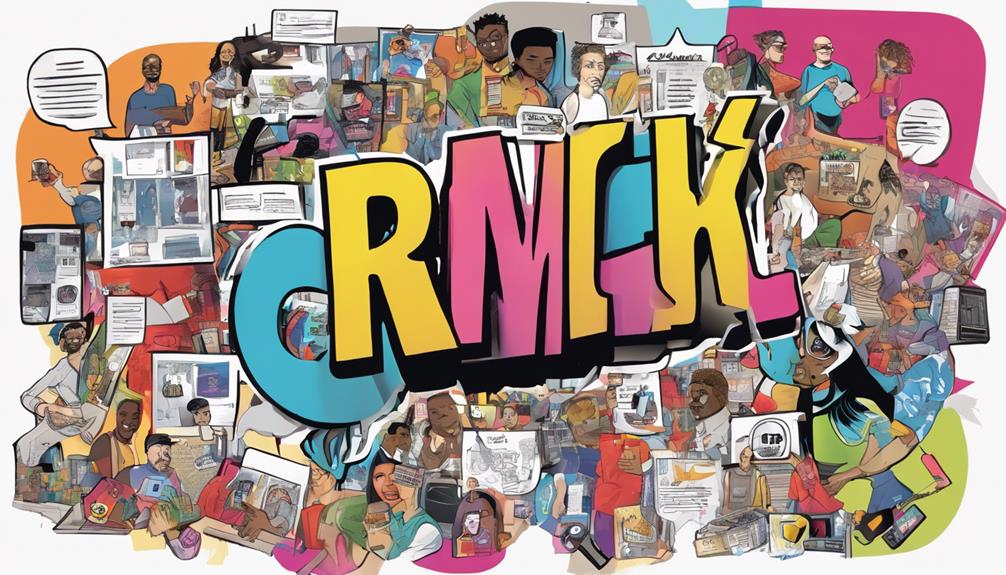Uniting your online and offline marketing efforts is essential for boosting your brand's visibility and customer engagement. Start by establishing common goals that align your strategies across both platforms. Incorporate interactive elements like QR codes in print ads to guide customers online. Host in-store events while promoting exclusive deals on social media to create a seamless experience. Use consistent branding to reinforce recognition and trust. Also, encourage user-generated content to foster community connection. By integrating these approaches, you can enhance customer experiences. Stick around; there's even more to discover about making your marketing efforts truly cohesive.
Key Takeaways
- Establish common objectives that align online and offline campaigns for unified impact and effectiveness.
- Utilize QR codes to create seamless transitions between online platforms and offline experiences.
- Leverage user-generated content to enhance brand authenticity and encourage community engagement across channels.
- Maintain consistent branding across all platforms to reinforce recognition and build audience trust.
Importance of Integrated Marketing
Integrated marketing is essential because it combines the strengths of both online and offline campaigns, ensuring you reach your audience effectively and consistently.
By balancing these approaches, you enhance customer experiences and create a cohesive brand message. Think of online and offline strategies as complementary tools that work together, not as rivals competing for your budget.
This synergy can greatly improve your brand visibility and profitability. Engaging customers through events or local partnerships fosters personal interactions, which build stronger relationships.
Additionally, collecting feedback at in-person events can guide your future marketing efforts. Ultimately, integrating these methods maximizes your outreach and drives better results, allowing you to connect with your audience on multiple levels.
Setting Common Objectives

Establishing common goals for your online and offline campaigns enhances their overall impact and effectiveness. When you align your objectives, like increasing product awareness or driving sales, you're creating a cohesive strategy that resonates with your audience.
Consistency across channels is crucial; guarantee that your offline ads lead to online landing pages and use QR codes for seamless shifts. Implement tracking methods to compare performances and refine your strategies.
Engaging Audiences Effectively

Engaging audiences effectively requires a strategic blend of online and offline efforts that resonate with customers at every touchpoint. By combining these approaches, you create a seamless experience that captures attention and encourages interaction.
Consider using the following strategies:
| Online Strategies | Offline Strategies |
|---|---|
| Leverage social media ads | Host in-store events |
| Promote exclusive online deals | Distribute flyers in local communities |
| Create engaging content | Partner with local businesses |
These tactics not only enhance brand visibility but also drive traffic between your online platforms and physical locations. By fostering personal connections and encouraging participation, you'll boost customer loyalty and engagement across all channels. Remember, consistency is key!
Leveraging User-Generated Content

Incorporating user-generated content into your marketing strategy can greatly amplify your brand's reach and authenticity, building on the personal connections you've already established with your audience.
Encourage your customers to share their experiences through photos, reviews, or videos, and showcase this content across your platforms. This not only strengthens community engagement but also fosters trust, as potential customers see real people enjoying your products.
Utilize social media hashtags to track submissions and create campaigns that blend traditional advertising with user participation. Highlighting user-generated content in your marketing efforts makes your brand feel more relatable and accessible, ultimately driving loyalty and encouraging more customers to join the conversation.
Embrace this powerful tool to enhance your marketing effectiveness!
Consistent Branding Across Channels

To create a strong brand presence, you need to guarantee your messaging and visuals remain consistent across both online and offline channels. This consistency not only reinforces brand recognition but also builds trust with your audience. Here's a quick look at essential elements to maintain uniformity:
| Element | Online | Offline |
|---|---|---|
| Visuals | Logos, colors | Signage, brochures |
| Messaging | Social media posts | Print ads |
| Tone of Voice | Informal, engaging | Professional, direct |
| Customer Interaction | Comments, DMs | In-person events |
Enhancing Customer Experience

Enhancing customer experience requires a seamless blend of online and offline interactions that cater to your audience's preferences and behaviors. You can create engaging experiences by integrating social media campaigns with in-store promotions. Encourage your customers to participate in online activities while they're shopping, making them feel valued.
Utilize events and trade shows to foster personal connections and gather feedback, which can inform future strategies. Showcase local partnerships to build credibility and enhance visibility in your community.
Measuring Success and Performance

Measuring the success of your integrated marketing efforts involves tracking key performance indicators that reflect how well your online and offline strategies work together. Start by monitoring metrics like website traffic, conversion rates, and customer engagement levels. Tools like Google Analytics can provide valuable insights into online performance, while sales data and customer feedback can gauge offline effectiveness.
You should also establish common goals for both channels, ensuring you can compare performance accurately. Utilize surveys to gather customer responses about their experiences with your brand across different platforms. This data can inform adjustments to your strategies, helping you refine your approach and maximize results.
Conclusion
By uniting your online and offline marketing efforts, you're not just creating a brand; you're weaving a tapestry of connections that engage and inspire your audience. By incorporating your brand messaging and visual identity across both digital and physical platforms, you can create a cohesive and memorable experience for your customers. This is especially important during holiday social media marketing, as consumers are bombarded with messages and advertisements. By having a consistent presence and message, you can stand out and create a lasting impression. Additionally, integrating online and offline efforts allows for a more seamless customer journey, leading to increased brand loyalty and ultimately, higher sales.
With consistent messaging and innovative strategies, you can transform every interaction into a stepping stone for growth.
So, embrace this integrated approach, and watch your brand flourish like a vibrant garden, rooted in community and blooming in the digital landscape.
The future of your marketing is bright, and the possibilities are endless!









